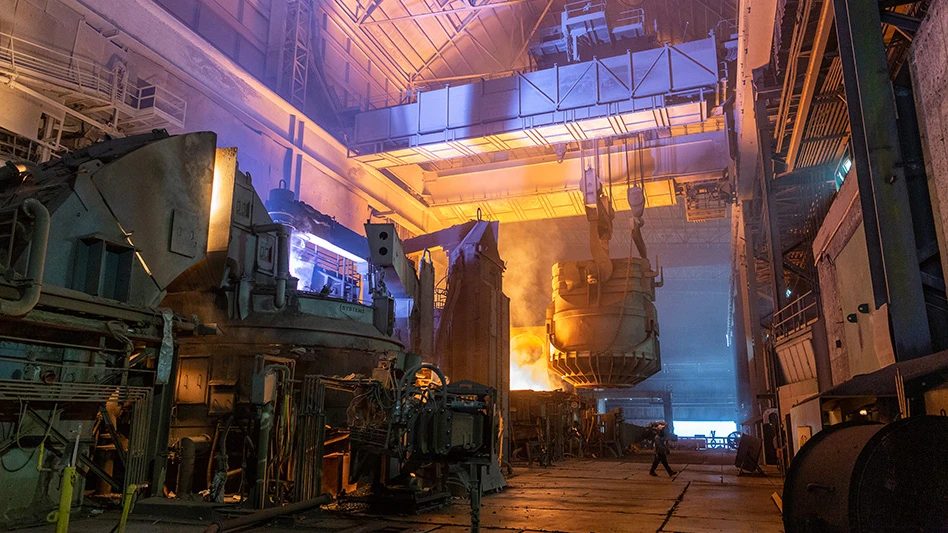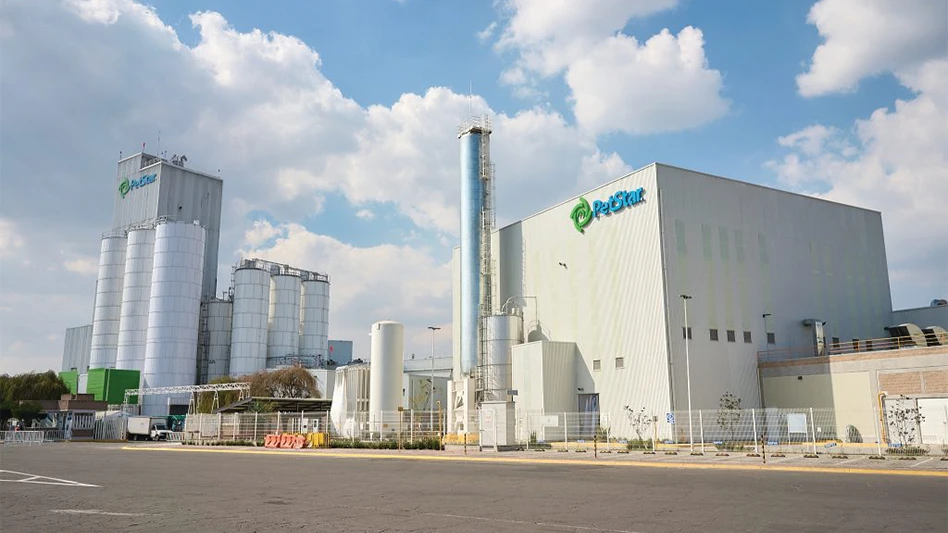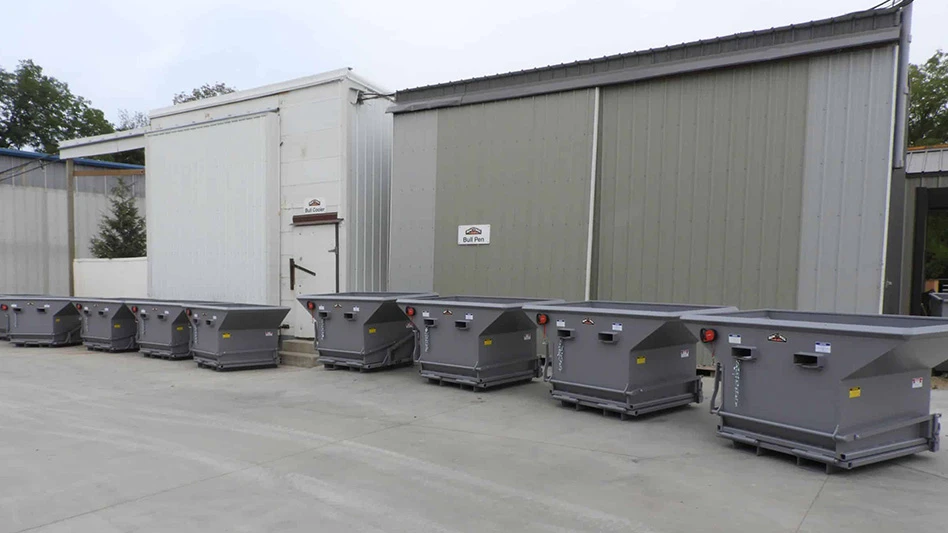The aluminum market may not have been as explosive as those for copper and nickel, nor did it have the sheer volume and dominance of iron and steel, but the metal has been generating significant long-term interest.
Consolidation has been the buzzword for the metals and mining industry during the past several years. With aluminum markets in a bit of a trough in many sectors during the past year, several large deals hope to take advantage of the mostly positive outlook.
In the metals and mining industry, the high prices of many such commodities throughout the last several years have provided many companies with significant capital with which to grow their core strengths or fill perceived holes in their business portfolios.
WHEELING AND DEALINGBHP Billiton, Rio Tinto, Alcan, Alcoa, United Rusal and Xstrata are only a handful of metals and mining companies that are taking steps to strengthen their core businesses. Often, these moves are done with an eye toward strengthening their aluminum positions on a long-term basis.
Throughout the past several years, a number of deals have been announced, which have resulted in aluminum production lying in the hands of far fewer operations. In a deal announced late in 2007, Australia-based BHP Billiton, the largest mining concern in the world, had expressed an interest in Rio Tinto, also one of the top-three mining operations in the world.
That deal follows Rio Tinto’s earlier acquisition of Canada-based aluminum giant Alcan. This acquisition made Rio Tinto one of the largest aluminum producers in the world, with an annual capacity of approximately 4.7 million metric tons of aluminum.
Rio Tinto’s acquisition of Alcan left Alcoa susceptible to a possible acquisition. Supporting that scenario, a recent report by the firm Desjardins Securities notes that Alcoa could be a tempting target in light of its relatively low valuation and its long-term power contracts.
Continued deals, proposals and rumors could further shift the power core of the aluminum industry toward developing countries.
Leading the way has been China, which, throughout the past decade, has embarked on a plan to boost its domestic aluminum production. China has been building a host of smelters as it looks to satisfy its domestic needs.
Analysts have predicted aluminum output in China will rise from 9.2 million metric tons in 2006 to about 12.6 million metric tons in 2007 and to 16 million metric tons this year in light of expanded capacity.
In comments given late last year, Alain Belda, Alcoa’s CEO, noted that China will continue to be a large factor in the aluminum market. The company projects the rate of Chinese primary aluminum production grew at a rate of nearly 35 percent. Even with export bans, consumer demand will absorb all the new production coming on stream.
A challenge that could affect the growth of China’s aluminum industry is the heavy demand for power required by aluminum smelters. In response to this challenge, China, which has been growing its manufacturing base quite significantly during the past several years, is now attempting to rein in growth. According to some published reports, the Chinese government is expected to restrain investments in aluminum and copper projects to reduce high energy costs.
China’s National Development and Reform Commission’s (NDRC) guidelines, released in December 2007, announced plans to limit investment in operations with less than 100,000 metric tons of production capacity.
Further, the NDRC will control investments in new alumina projects that consume less than 800,000 metric tons of bauxite per year or 600,000 metric tons of imported bauxite per year. The agency also will limit investments in secondary aluminum projects with an annual production capacity of less than 50,000 metric tons or aluminum fabrication projects with an annual capacity of less than 100,000 metric tons.
In the most recent announcement, a joint venture between Mubadala Development Co. and Dubai Aluminium Co. has raised close to $5 billion to build what it calls the largest aluminum smelter in the world. The project is expected to total as much as $8 billion, and, when fully operational, will have a total capacity of 1.4 million tons of aluminum per year.
This announcement follows several other high profile projects that are breaking ground in the Middle East, a region of the world not typically considered a ideal for aluminum production facilities. In a recent article in the Wall Street Journal, some proponents in Saudi Arabia are lobbying to build as many as 10 smelters in the country.
These steps by Middle Eastern countries follow several years of sizable oil profits. Awash in cash, these countries are now looking for ways to diversify their economies.
While a number of mining concerns continue to slug it out over extending their metals menus, Russia’s United Co. Rusal has become one of the largest, if not the largest, alumina and aluminum producers in the world.
The company was founded in March 2007 through the merger of Rusal, Sual and the alumina assets of Glencore and claims to produce approximately 3.9 million metric tons of aluminum and 11.3 million metric tons of alumina annually. Rusal has operations in 19 countries on five continents and employs 100,000 people. Its operating assets include 14 aluminum smelters, 10 alumina refineries, four bauxite mines and three foil mills.
THE HOT SPOTSFrom a recent analyst report, Alcoa notes that primary aluminum posted a global production increase of 10 percent. While significant, China’s consumption jumped by slightly less than 36 percent, while consumption in the former CIS countries increased by 9.9 percent; and shipments to Latin America were up by 7.8 percent.
The increase in global aluminum production, principally by China, has created perceptions of oversupply of material on the market. However, several forecasts note the imbalance is beginning to dissipate. One report notes that China could move from a net exporter of aluminum to a net importer. The swing could help to strengthen global aluminum prices.
On the downside, consumption by North American markets dropped by 6 percent for 2007, while Europe posted a modest 3.2 percent increase.
In a more traditional market, the problems with the U.S. economy, including those of the housing and automobile sectors, two large consumers of aluminum, would signal greater concern on the part of the global aluminum market. However, as China and other developing countries become more industrialized, the role the U.S. plays in dictating the aluminum market diminishes.
One advantage for dealers of secondary aluminum is that with the weak U.S. dollar, there are greater opportunities to ship material offshore, taking advantage of the currency differences.
While other nonferrous metals have generated sizable ink in light of their huge price runs, reports by consulting firm CRU note that aluminum has experienced the fastest consumption growth of all nonferrous metals during the past five year. Forecasting to 2030, CRU expects global aluminum consumption to grow by more than 140 percent.
Even though the industry is facing some short-term challenges, most notably in the domestic market, the longer-term market for aluminum should continue to show great promise.
The author is senior and Internet editor of Recycling Today and can be contacted at dsandoval@gie.net.

Explore the February 2008 Issue
Check out more from this issue and find your next story to read.
Latest from Recycling Today
- Autocar releases Smart Battery Cable to advance refuse truck fire safety
- PLASTICS launches Positives of Plastics website
- Impact Air Systems launches compact ZAC400
- PCA to shut down paper machines at Washington containerboard mill
- BMRA provides landfill guidance for UK shredder operators
- Fornnax high-capacity tire recycling plant
- EU introduces measures to secure raw materials, strengthen economic security
- US Steel to restart Illinois blast furnace





